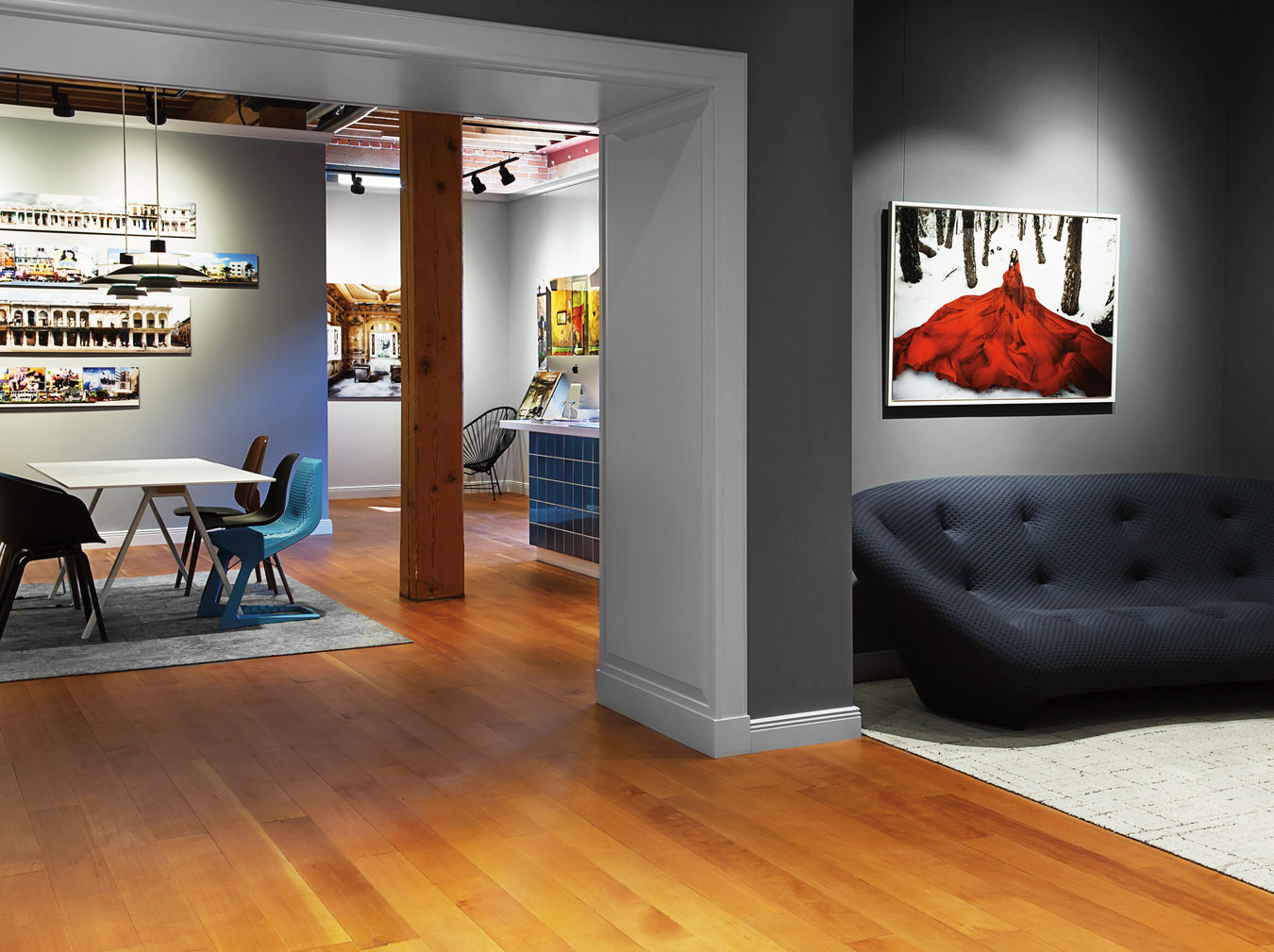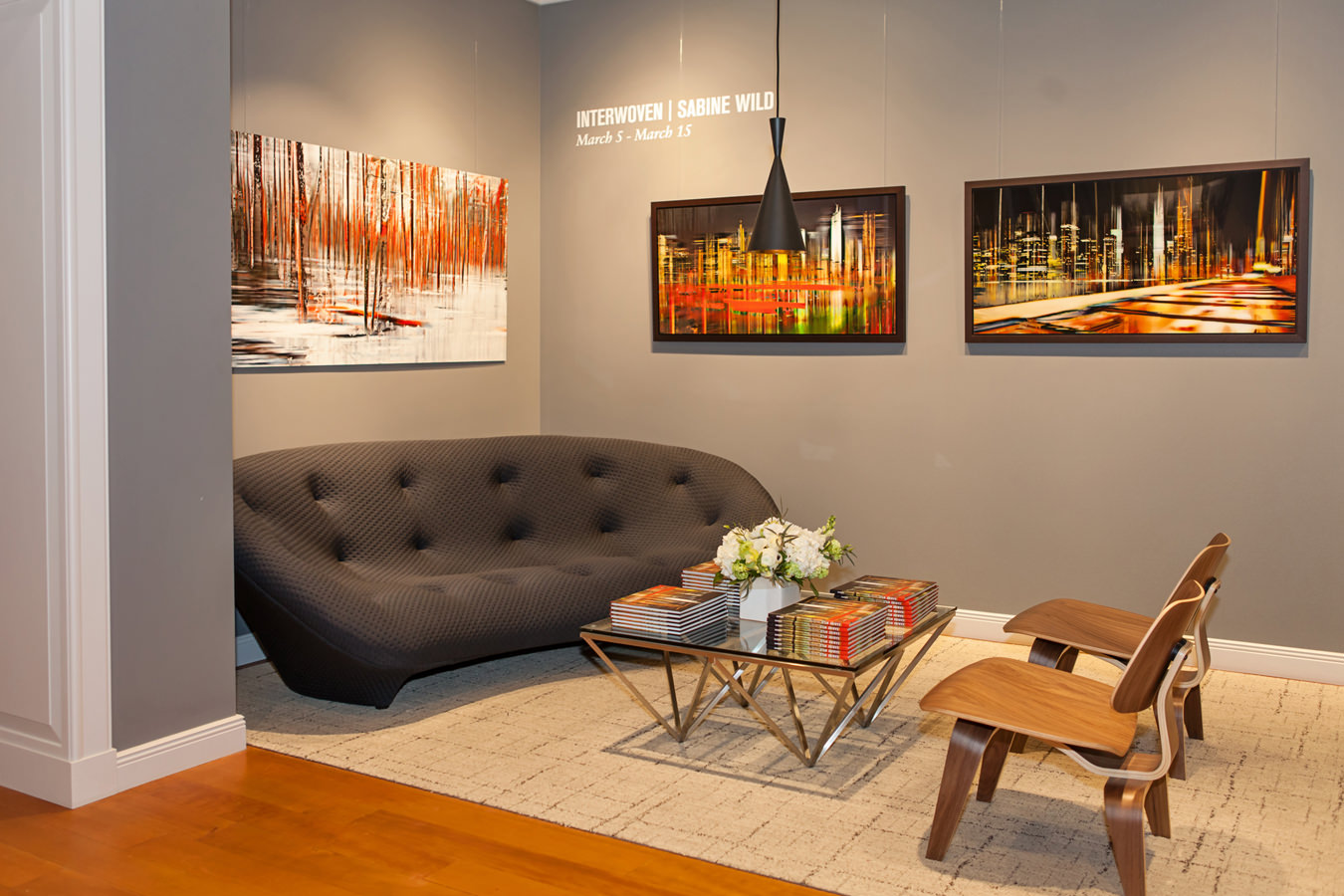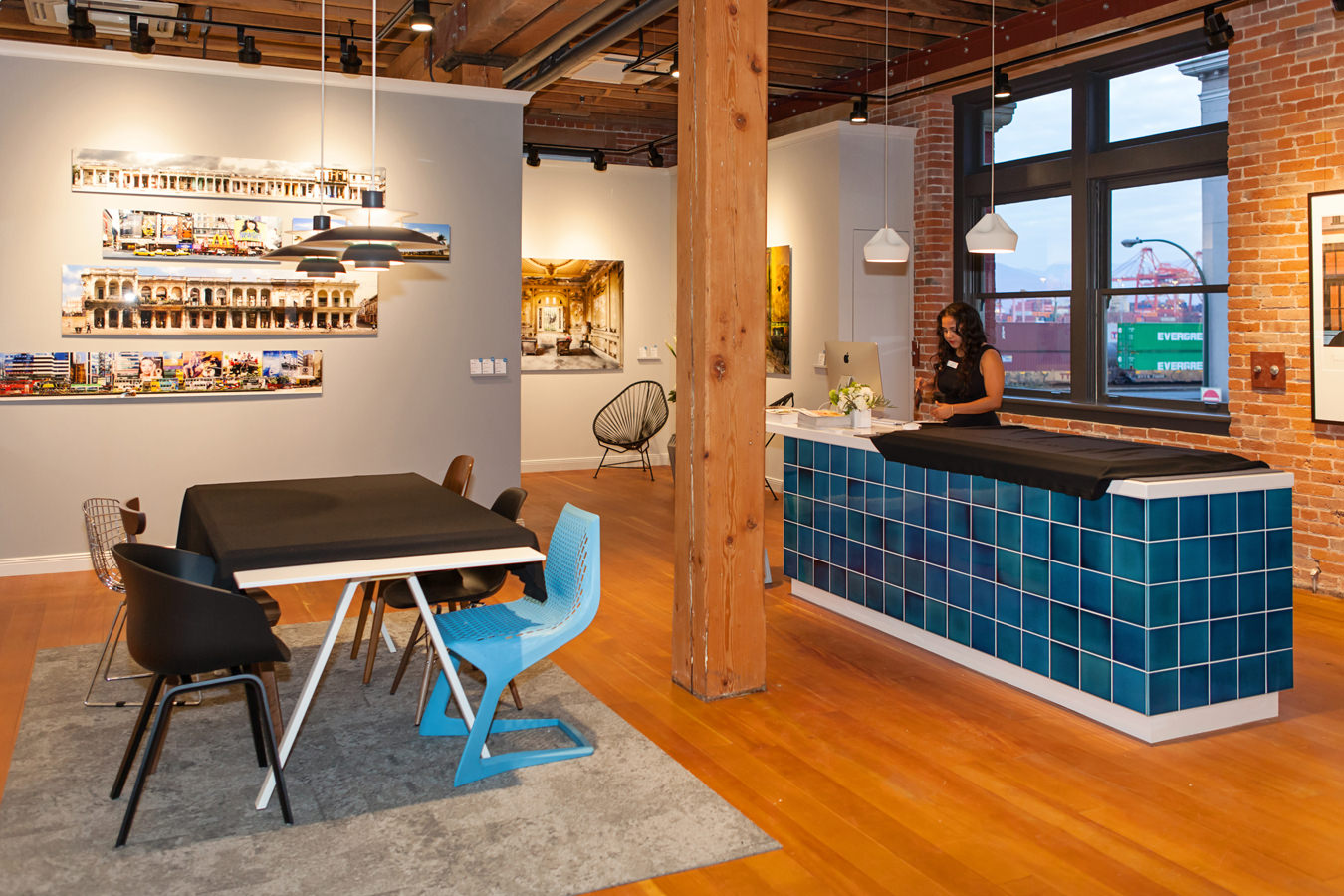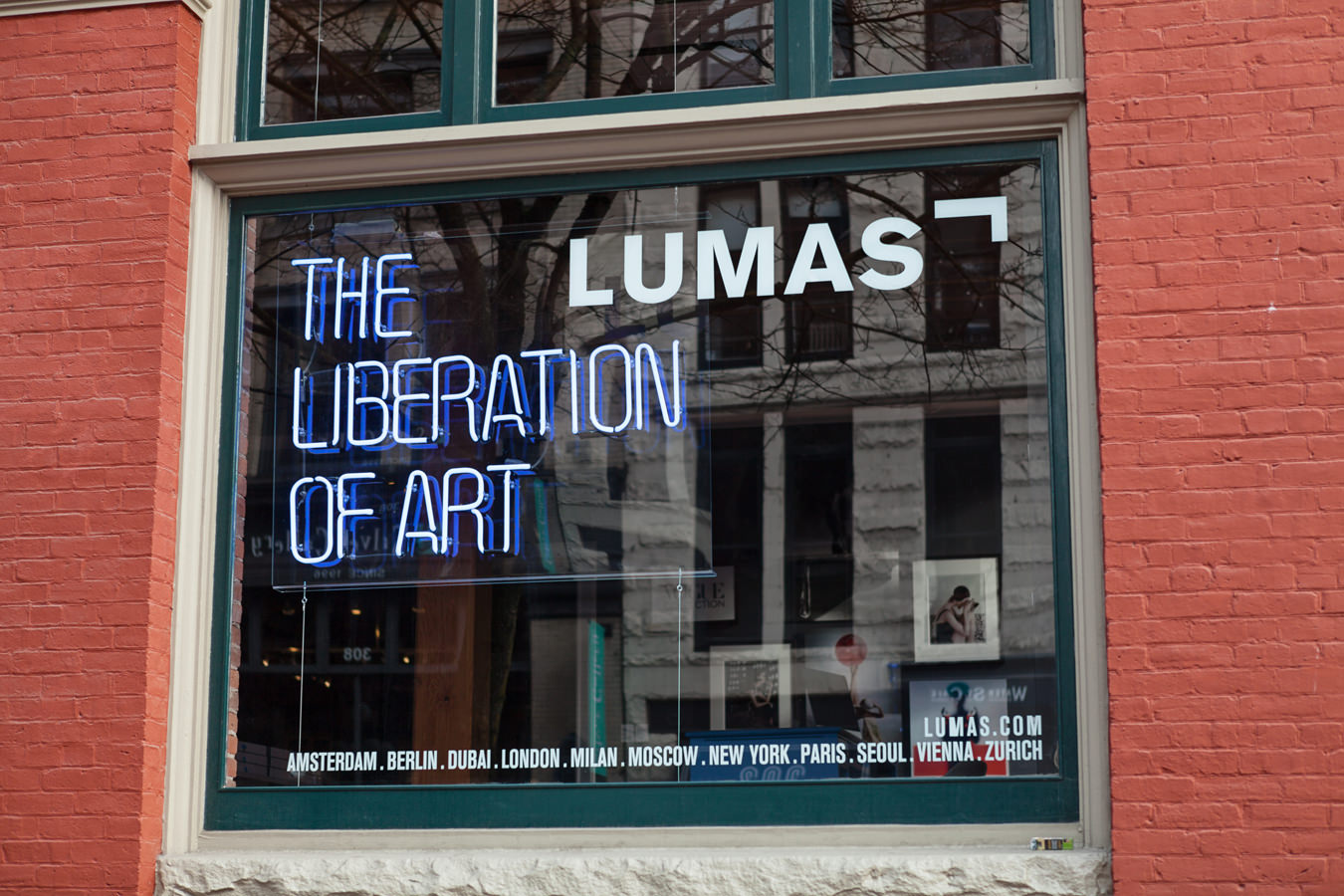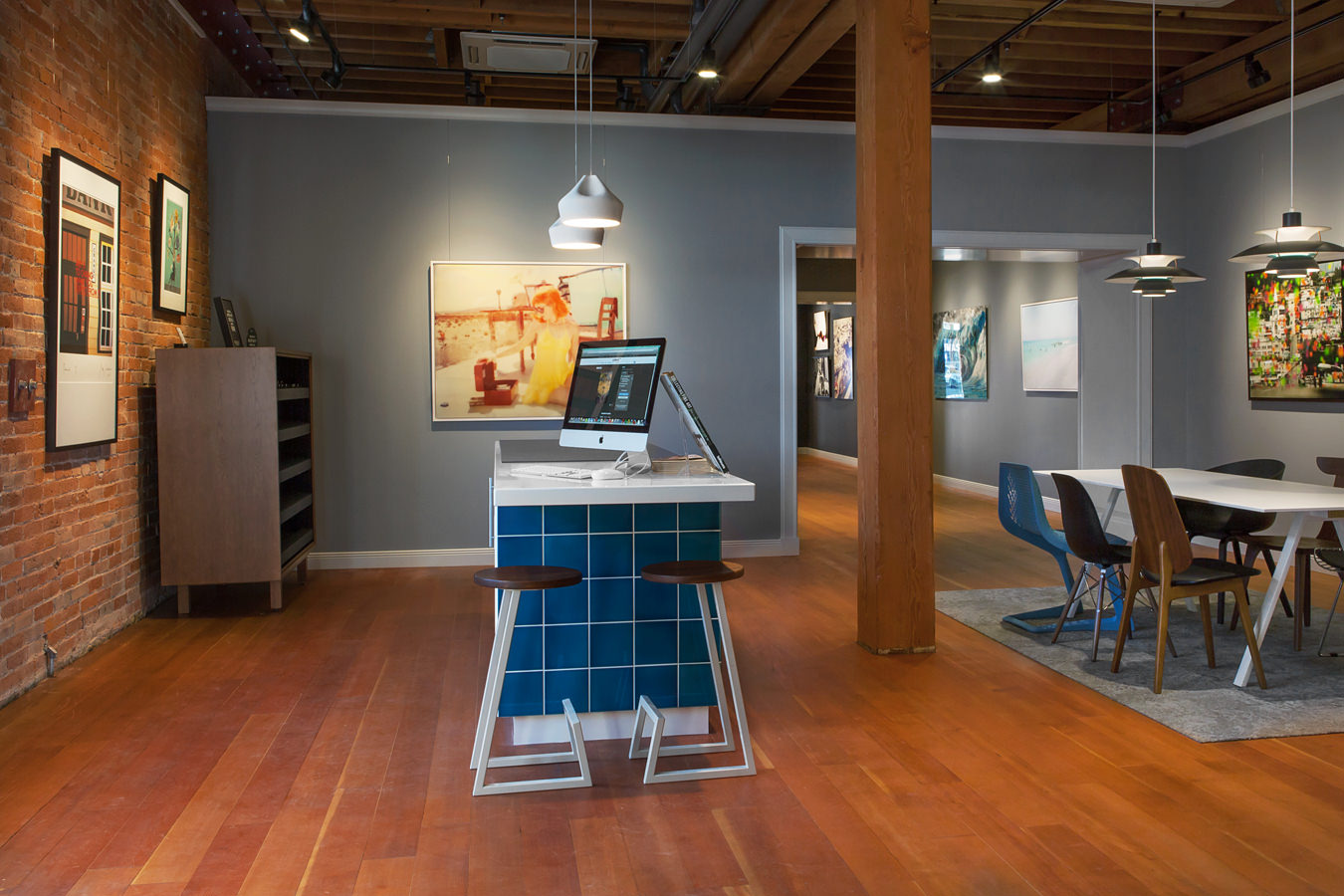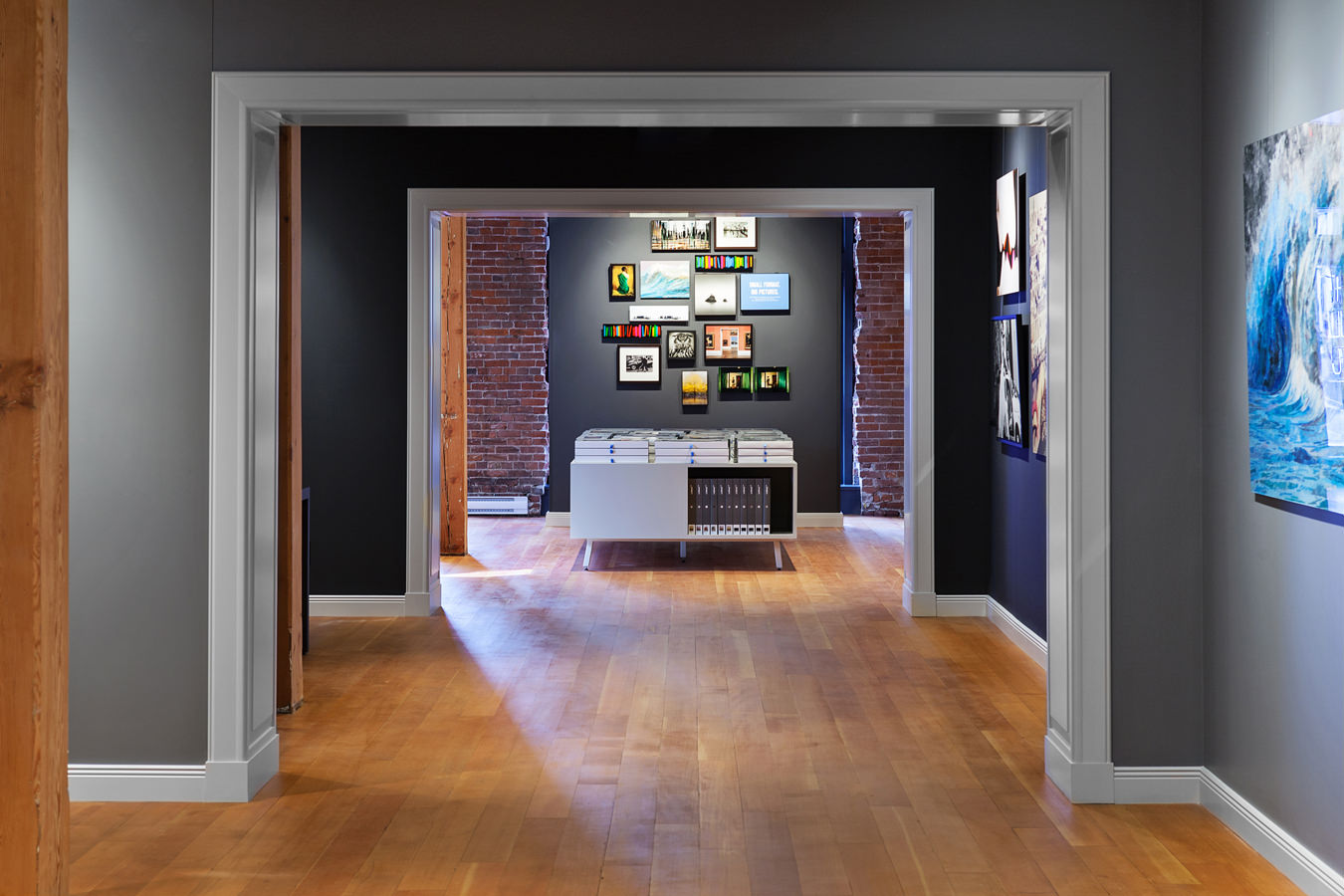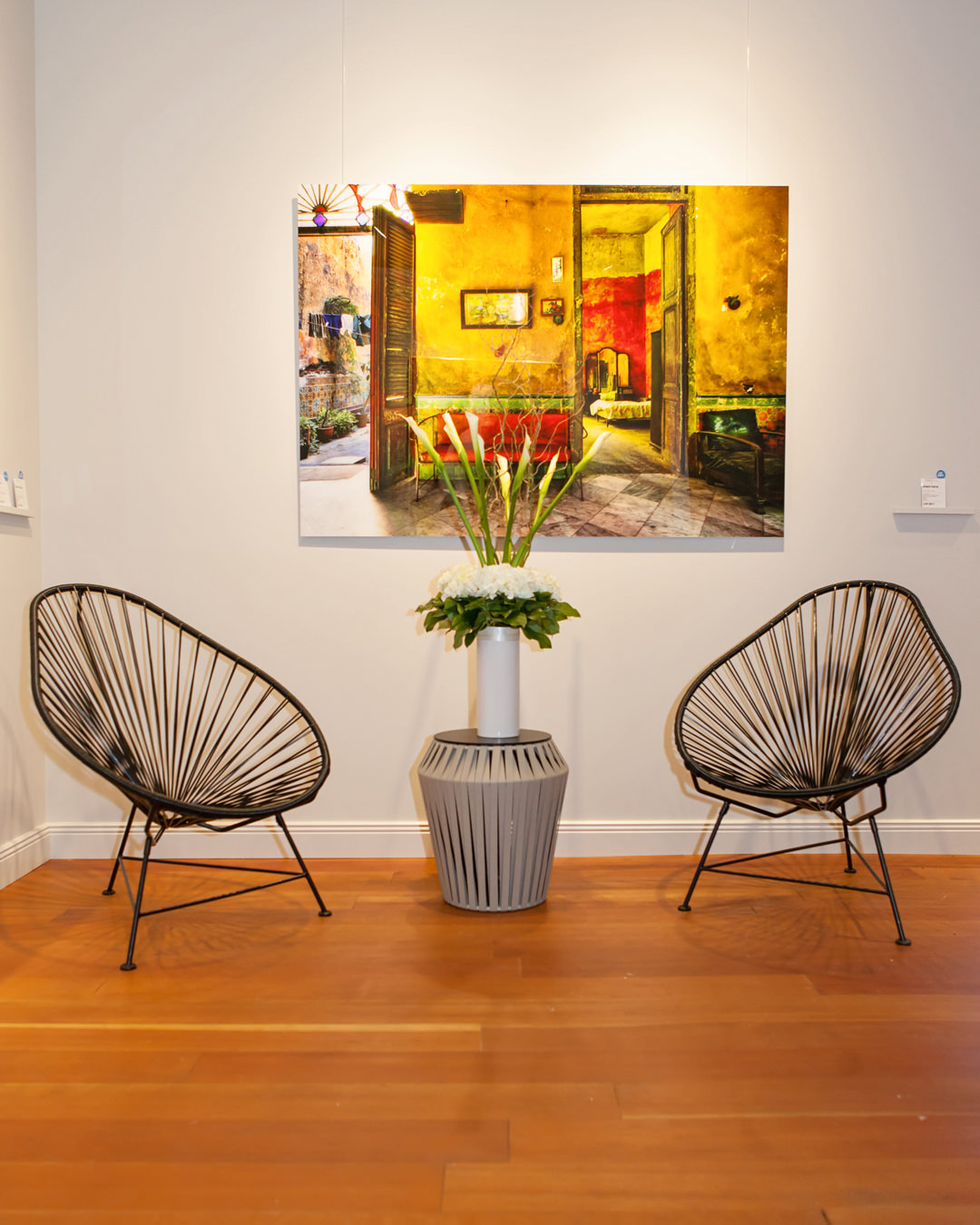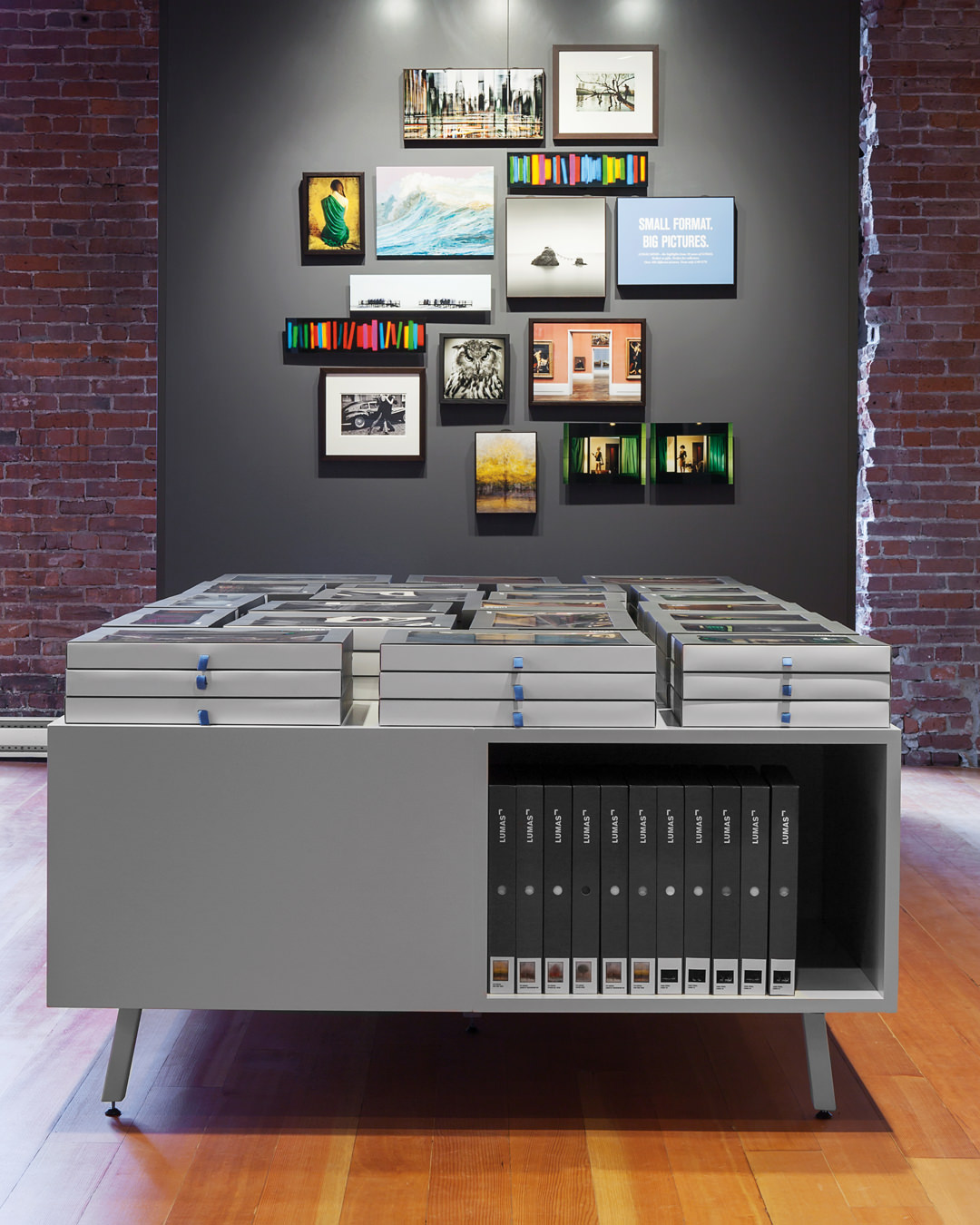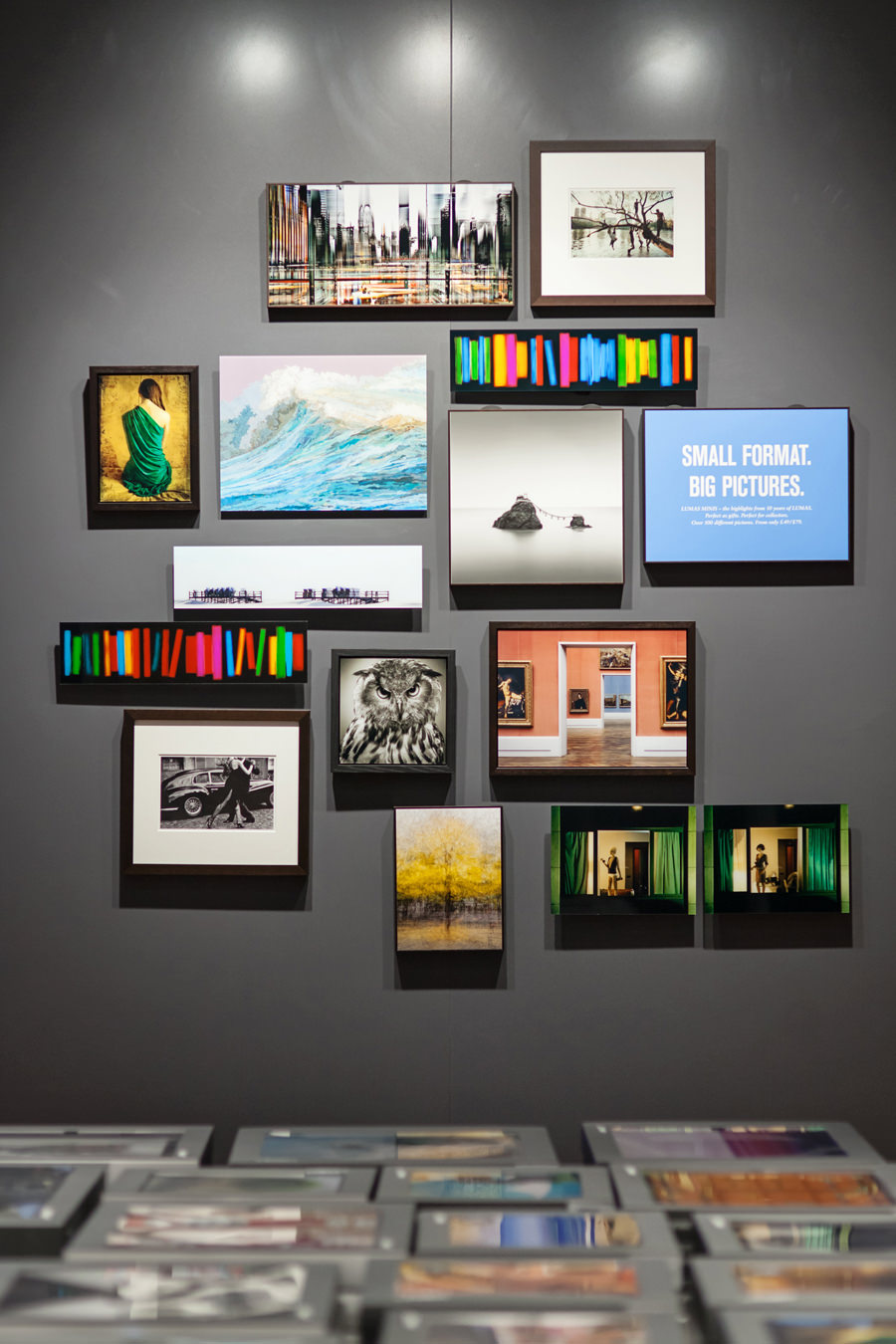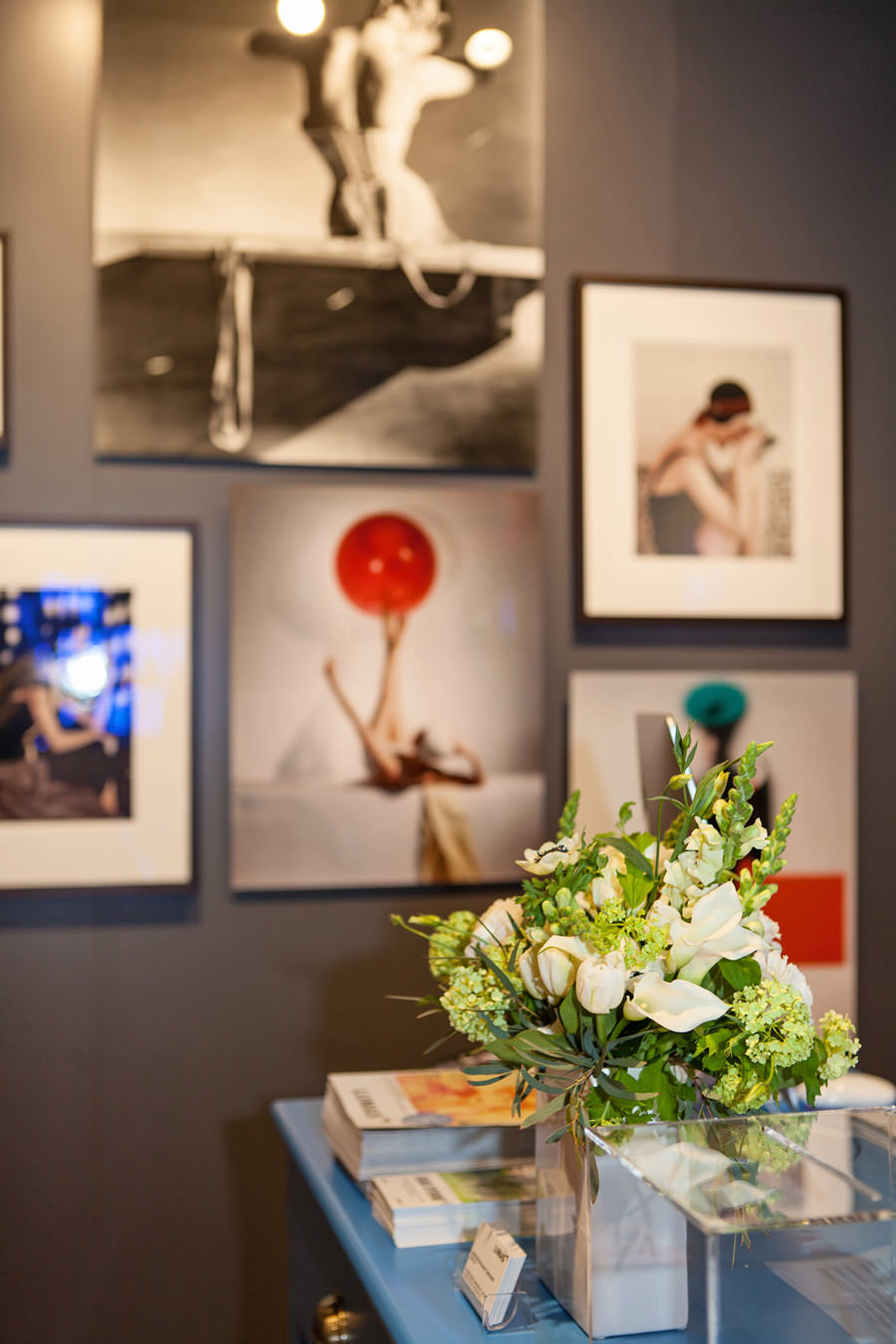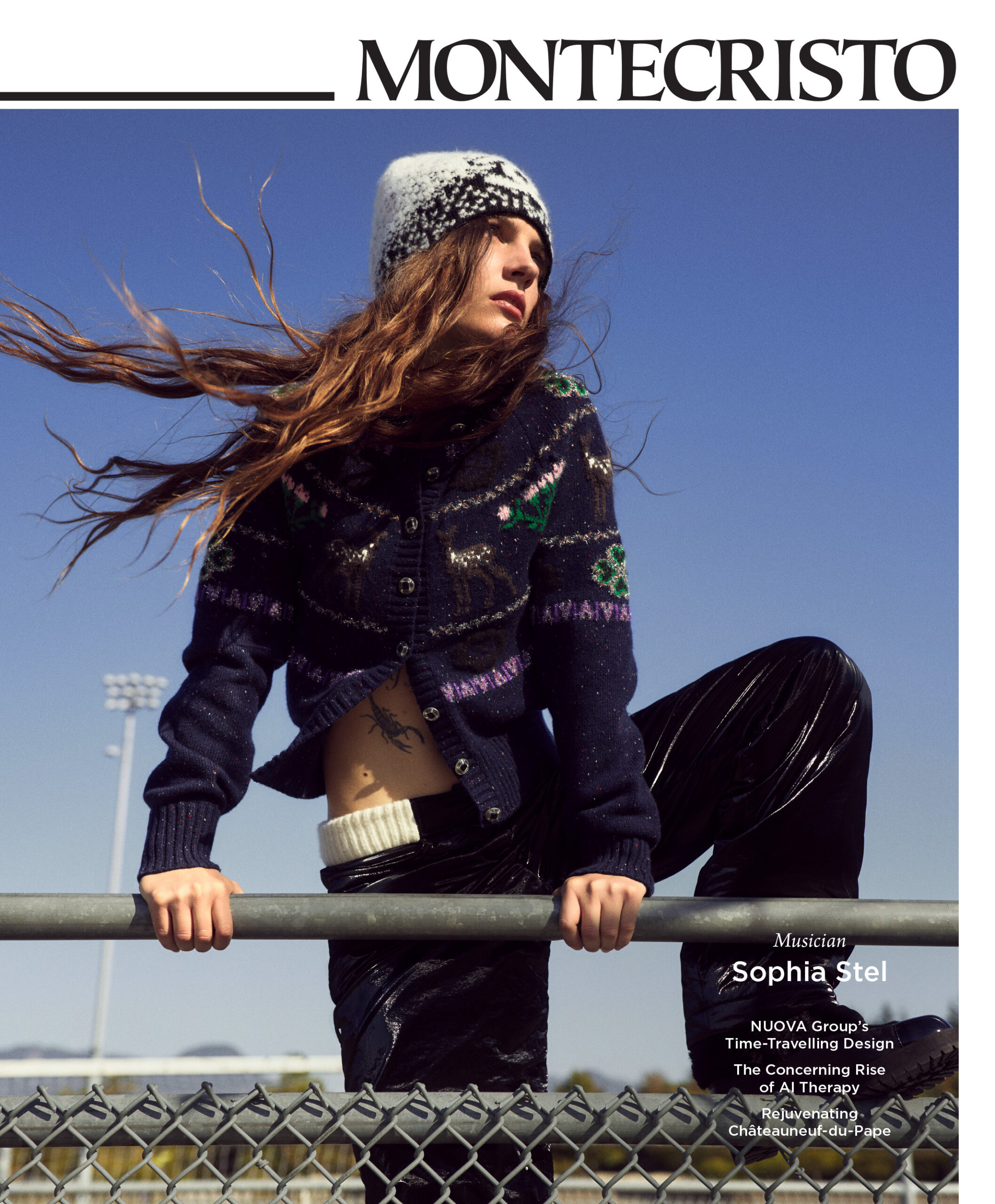Photography has long been a cornerstone of Vancouver culture. From early experiments in camera art to the so-called school of photoconceptualism in the 1980s, and even the Capture Photography Festival that now celebrates this medium annually, the lens has been a focal point in the city’s artistic and cultural histories. Not to mention, Vancouver’s beauty draws thousands of visitors to its vistas every year; it’s hard to avoid avid shutterbugs snapping pictures of the land and cityscapes.
It seems appropriate, then, that LUMAS would open a space here. Based in Berlin, LUMAS is a chain of boutique galleries specializing in limited runs of photographic prints, although the portfolio has expanded to include other mediums as well. The branch in SoHo, Manhattan used to be LUMAS’s sole North American location. But now, directly behind the Gastown steam clock—ironically, one of Vancouver’s most photographed sites—neon lettering glows from within a storefront window, spelling out “The Liberation of Art”.
It’s an apt tagline for the company. Oftentimes, artworks are produced as one-off originals or in editions of fewer than five, with price tags as famous—if not more famous—than the pieces themselves. LUMAS was established in 2003 when art lovers Stefanie Harig and Marc Alexander Ullrich decided to offer top-quality prints at affordable rates, encouraging new collectors to invest in art while promoting photography among wider audiences. In order to democratize authentic limited editions, LUMAS has partnered closely with artists to determine the run of prints—usually between 75 and 150—with every one hand-signed and certified by the artist. “I just loved the concept,” says Erin Lang, the managing director of LUMAS Canada. “I saw myself as a customer and wanted it here.” Lang, an entrepreneur based in Toronto, had worked in public relations in New York for five years, and—by luck or by fate—happened upon the SoHo gallery shortly before returning to Canada. After a few well-timed telephone calls, Lang signed on as a franchise partner just as LUMAS was looking to expand. A Toronto location opened in September, with Calgary and Montreal galleries slated for next year.
At present, LUMAS has nearly 40 galleries across 16 countries, with a portfolio representing some 1,800 works by over 200 artists. All prints are shipped from WhiteWall, a state-of-the-art photo lab in Cologne, Germany. The only exceptions are works in LUMAS’s Masters series, which includes celebrated artists such as Peter Doig, Sigmar Polke, and Vancouver’s own Jeff Wall; these pieces are procured through the artists or their estates. And despite this already staggering variety, LUMAS’s portfolio will continue to increase as the company’s eight Berlin-based curators tirelessly peruse art fairs, exhibitions, and studios for new works.
Needless to say, deciding which works deserve the gallery’s finite wall space is not easy. “We try to curate with a thematic vision,” explains Lang. “And we’re always sending the portfolio team monthly reports of the gallery. And they’ll suggest what looks great together; and we’ll see reports from other galleries. So we share inspiration.” Still, tastes vary from city to city; and even though core aspects of every LUMAS location may remain consistent—clients will always find the distinctive blend of gallery, boutique, and salon elements that characterize the franchise—each one reflects its locale.
LUMAS Vancouver feels right at home in Gastown. The historic red brick of the building frames the gallery’s windowed foyer, which overlooks one of the district’s busiest corners. Inside LUMAS, a short flight of wide wooden stairs ascends to a landing, where every wall is beset with a diverse array of prints. One wall is almost entirely occupied by a Damien Hirst print from LUMAS’s Masters series—a luminous image of a diamond-encrusted skull, which seems to shift mirage-like under the light—while another façade features an elegant spread of fashion photography, in editions of 150 to 250, from Condé Nast’s Vogue collection. Further in, more fashion photography from the New York-based Trunk Archive sits across from a small library, where LUMAS’s open-edition Classics—glamorous black-and-white photographs of 20th-century icons—surround a selection of gorgeous books. Proceeding onward, it becomes clear just how extensive LUMAS’s Vancouver gallery is. There’s a sitting area, with low couches simulating a small living room; beyond that, the space opens up with a long table and tiled counter arranged like a dining room and kitchen. All LUMAS galleries feature the kitchen counter, as well as a dining room table accessorized with an eclectic mix of chairs; however, much of the furniture is sourced locally.
The 3,400-square-foot space allows visitors to easily envision how each work might complement a range of rooms. Moreover, the pieces are frequently rotated. A large diptych entitled The Secret, by American pop artist and illustrator Joe McDermott, depicts a blonde beauty whispering seductively to her accomplice. Hanging in the front room of LUMAS, it teases and entices the viewer deeper into the gallery; but once it’s been moved into the dining room set-up, it proves an ideal centrepiece for a gossipy social gathering. Other pieces speak for themselves, regardless of context. Zanzibari photographer Amyn Nasser’s panoramas of Vancouver vividly contrast the violet-blue shadows of twilight with an orange and yellow city glow, with illuminated condominium windows expressing the inherent voyeurism of downtown living. The eloquently-titled photograph The Little House That Fought Demolition pushes this subtle, urban critique further, wherein a diminutive, two-storey house stands amid the towering skyscrapers. The scene is a bit comical, more than a little sad, and—for many Vancouverites—all too familiar.
Germany-based artist Sabine Wild also photographed Vancouver when she attended the gallery’s opening in March. “In general, we’ll do two formal artist events like that a year,” says Lang. Since the inauguration of Canada’s first LUMAS location, there has also been interest in adding more Canadian artists to its roster. This, in turn, raises the question: where does LUMAS fit within Vancouver’s cultural scene? “A lot of artists have come in here to take a look at the gallery and scope it out,” Lang muses. “We’re not in competition with the other galleries. If anything, I think we’re building the future art collectors and enthusiasts—their future customers.” She sees LUMAS as an entry point to Vancouver’s established art community: new buyers have the opportunity to purchase a work, and develop their visual literacy and familiarity with art. “Everybody’s going to like something else, because art’s really personal,” Lang affirms. “You have to love what’s in your home, and want to look at it every day, and think to yourself, ‘I’m so happy that’s there.’”
__________
LUMAS, 305 Water Street, Vancouver, British Columbia, V6B 1B8, Canada, 604-565-4700.

